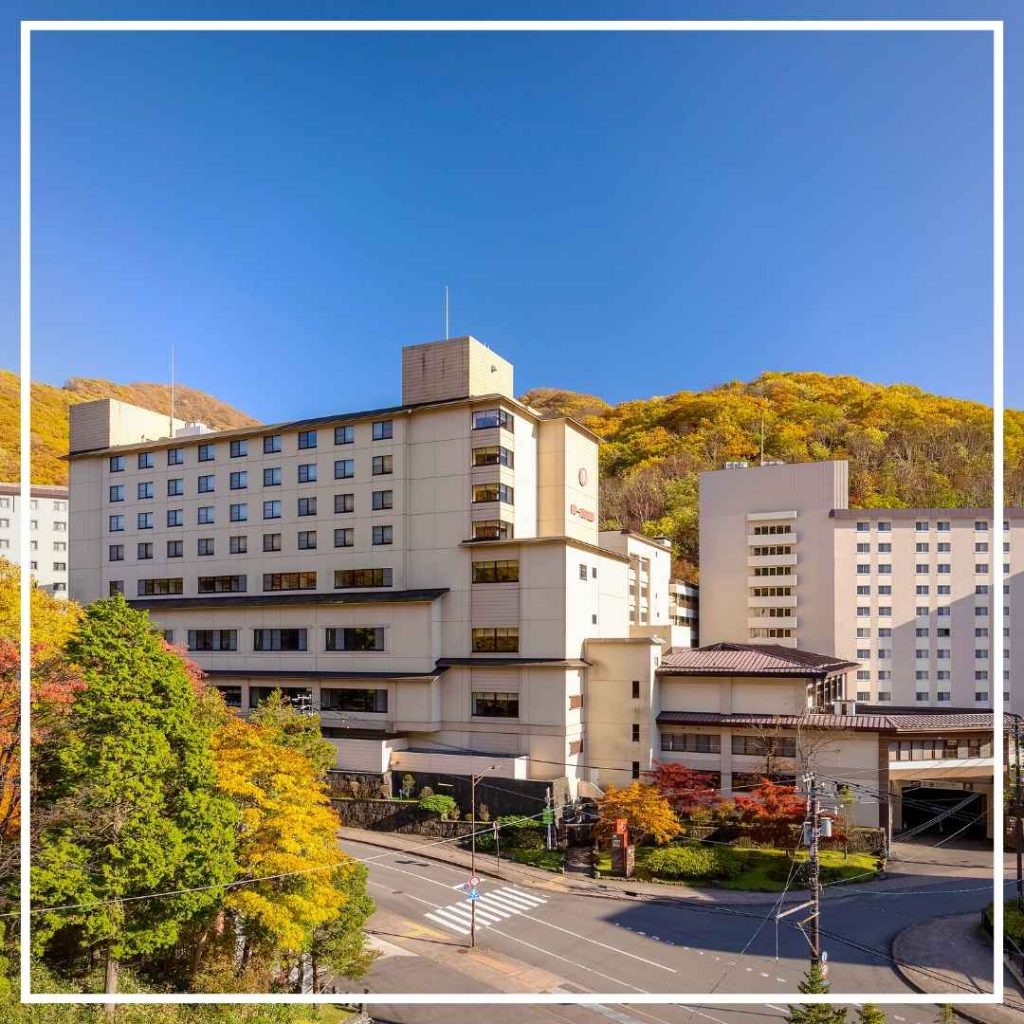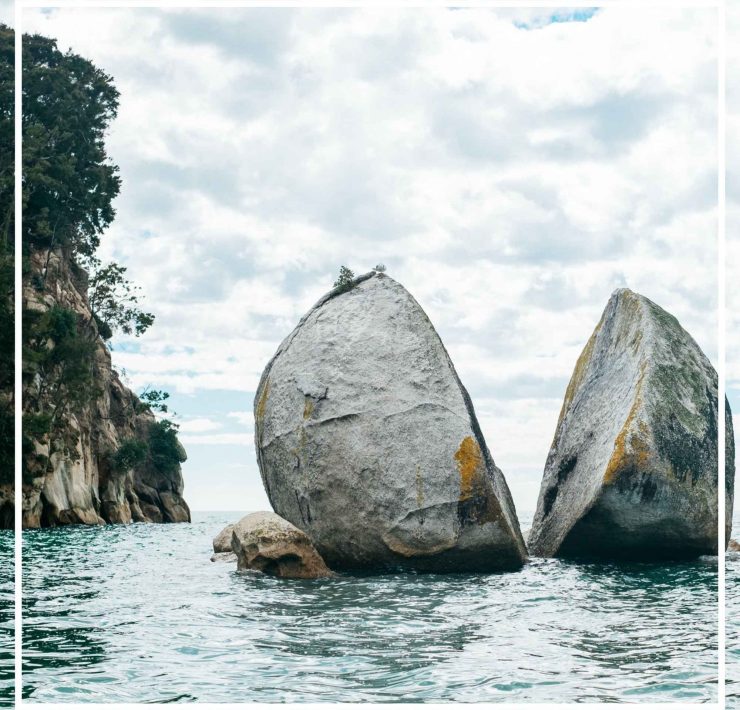From Townsville To Hokkaido: Meet The Queenslander Who Swapped Australia’s Great Outdoors For Japan’s

Return to Wonder – Japan Endless Discovery
“Can I get you anything to drink?” a smiling man asks me as he shakes my hand.
I’ve only been in Hokkaido for three days. I’ve already been caught in a snowstorm at the top of the volcanic Mount Tarumae, cycled a fat bike around the stunning Lake Shikotsu, and hiked around Lake Kuttara.
As excited as I am to be exploring Hokkaido, this evening I’m feeling tired. And then, as if reading my mind, this smiling man continues.
“A beer?” he puts to me.
We’re standing in the large lobby of the Dai-ichi Takimotokan hotel and the man who’s shaking my hand is Mark Navin, the hotel’s Vice President and CIO.
But what takes me a little by surprise is that Mark isn’t Japanese, he’s Australian. And suddenly I understand how he knows that yes; yes I really would like a beer please.
Hokkaido
Before this trip I’d not been to Japan before, let alone Hokkaido – Japan’s northernmost island. So I ask Mark to tell me a little more about it.
“Hokkaido is one of the very rare places in the world that has two distinct cultures,” Mark tells me. “The Ainu, and the Japanese.”
The Ainu are Hokkaido’s Indigenous people. The first historical records of the Ainu people date back to the 15th century, but it’s believed that the Ainu culture was established even earlier – possibly as far back as the 9th century.

Image: AWOL
But it wasn’t until the 1870s that any sort of significant migration from Japan’s main (and largest) island, Honshu, to Hokkaido began.
Today, Hokkaido has evolved into a staple destination for culture-seekers.
In winter, both local and international powder-fiends flock to Hokkaido for its skiing. And outside of winter, the island is brimming with natural beauty, traditional food, and outdoor adventure.
“Hokkaido has four really strong distinct seasons,” Mark says. “To me, coming from North Queensland, that was really interesting.”
When I ask Mark about Japanese culture, he tells me, “you don’t have to read very much” about it to discover that there are two particular parts to it that are long-standing.
“The food culture, and the bathing culture,” he says.
And it’s the latter that’s built up a reputation for both the Dai-ichi Takimotokan hotel and the town – Noboribetsu Onsen – in which the hotel is situated.
Noboribetsu Onsen
Noboribetsu Onsen town is situated about a two hour drive away from Hokkaido’s capital city Sapporo.
It’s arguably the most famous onsen resort on the island, largely for one reason: its hot spring baths.
“We wouldn’t exist if we didn’t have hot springs,” Mark says.
Jigokudani – or ‘Hell Valley’ as it’s often called – is a valley that sits just above Noboribetsu Onsen town, which was formed as a result of repeated volcanic eruptions around 8,000 years ago.
The geothermal activity produces more than 10,000 tonnes of hot spring water every day, which is funnelled to different locations around Noboribetsu Onsen.

Image: AWOL
Hot spring law in Japan defines an onsen to be either water, water vapour or other gases that emerge from the ground with a minimum temperature of 25 degrees celsius, or with a minimum concentration of certain minerals.
All across Japan are different types of hot spring sources that differ in the type of water they produce, and the type of treatment that water requires.
But this is where Mark thinks Noboribetsu Onsen is unique.
“Most areas usually only have one type of bath. It’s either alkaline, or sulphuric, or something,” he explains. “But of all the different recognised types in Japan, Noboribetsu has seven of them.”
It’s believed that in ancient times, Hokkaido’s Ainu people used the island’s hot springs as medicinal baths. And when early Japanese migrants from Honshu first arrived in Hokkaido, they soon discovered the supposed healing properties of the water for themselves.
An Onsen Pioneer

Image: Dai-ichi Takimotokan
Kinzo Takimoto is known as the founder of healing onsen. He was a carpenter who was dispatched to Hokkaido from Tokyo (then known as Edo) in the 1850s.
There’s a story that Kinzo’s wife, Sata, suffered from severe dermatosis. After hearing rumours of the health benefits of Noboribetsu’s hot spring water, Kinzo is said to have built a tiny hut up a mountain where Sata could bathe in the water to treat her condition.
The story goes that Sata fully recovered, Kinzo obtained permission to become a ‘yumori’ (the keeper of a hot spring), and he then opened an inn that offered hot springs bathing to its guests.
95 years later in 1953, that inn had become a hotel and it changed its name to Dai-ichi Takimotokan. In 2014, Tomoko Minami took over as president of Dai-ichi Takimotokan.
And Tomoko Minami? Well, ‘Shorty’ as she introduces herself to me as – smiling as I cotton on to the irony of her being taller than most of our group – she’s Mark’s wife.

Image: Mark Navin
From Townsville To Hokkaido
Mark was born in Northern Queensland, and spent the best part of his childhood in Townsville.
He gives me what is likely the briefest of synopses to span decades of a person’s life, explaining how he ended up in Hokkaido.
He tells me about the time he spent working for the Bureau of Meteorology in Antarctica, which he says “just seemed like a good idea at the time”.
He goes on to recount how he learned to scuba dive whilst working in the Solomon Islands, then how he trained as a scuba instructor in California, and consequently about how he followed his girlfriend at the time to Tokyo.
Mark’s now been living in Japan for over 30 years. When his previous relationship came to an end he decided to stay in Tokyo, which is where he met Shorty.
I ask him if it was love at first sight. “Yeah, I think it probably was. For me at least!” he says.
The Dai-ichi Takimotokan hotel has always been a family business for Shorty’s family. So when the hotel was on the hunt for new ownership, it turned to Shorty.
“My father-in-law said to us at the time, ‘you know, this is a family business. Come back and run it’”, Mark remembers. “So my wife became the owner and operator of the hotel, and I became the vice president.”
Ryokans
“Think of a ryokan a little bit like a small hotel with a hot springs bath,” Mark explains. “It’s usually run by Mama and Papa as they call it here, so it’s a small family business.”
Japan’s ryokans are said to date back to the 8th century, quite possibly making them the oldest form of hotel in the world.
Ryokans flourished in the 17th century when they became popular among traders and samurai.
A ryokan stay has always emphasised traditional Japanese customs and procedures, and Mark describes the typical ryokan business model as “one night, two meals”.
Typically, that would include a ‘kaiseki ryori’ (a formal, multi-course) dinner and then a traditional Japanese breakfast the next morning.
Ryokans can now be found all over Japan, but Dai-ichi Takimotokan is what Mark calls a ‘Dai ryokan’, which he says just means a “big ryokan”.

Image: Dai-ichi Takimotokan
“We think that, in the past, farmers would close down their farms in winter and come and stay at the ryokans,” he tells me. “That meant that for three or four months of the year we had almost semi-permanent guests, and maybe that’s one of the reasons why a few of these places got so big.”
Now, Dai-ichi Takimotokan has a guest capacity of 1,200 and almost 400 rooms. Those rooms vary, from suites and western-style rooms to traditional Japanese-style rooms.
But Mark tells me that what’s made Noboribetsu Onsen such a prominent ryokan area is Hell Valley and its hot spring water.
“The bulk of the hotels in Noboribetsu Onsen get their hot springs water from Jigokudani,” Mark says.
“Most ryokans tend to drill down for the water, sometimes quite deep. We don’t need to, we just put a tap on the water bubbling out of the ground. Underneath the town there’s piping going everywhere, it’s bizarre.”
At Dai-ichi Takimotokan that water feeds the hotel’s 35 baths, which Mark thinks is probably in “the top three” largest baths in Japan. And admittedly, the first time I walked into them, I couldn’t help but be impressed by the size of them.

Image: Dai-ichi Takimotokan
Five different minerals make up the baths, from sulphur to salt or sodium, each of them boasting various healing properties.
The baths are so important to the hotel that it employs someone full-time who’s recognised by the government as licensed to take care of the hot water bathing systems.
“You could argue that if you’ve been to Dai-ichi Takimotokan, you’ve been to half the types of baths in Japan,” says Mark.
Outdoor Adventure
Noboribetsu Onsen, and Hokkaido more broadly, is now well-known as a hot springs and ryokan destination.
But there’s one part of the ryokan tradition that Mark is keen to see the area improve on.
“It also tends to be that [at ryokans] people tend not to go outside of the hotel,” he says. “There’s often not a reason to.”
Mark tells me that he has always been an outdoors kind of person, all the way back from when he was “in the Cubs and Boys Scouts” as a child, to his adventures in Antarctica and California.
And, as much as I myself came to enjoy the hot spring bathing culture whilst in Noboribetsu Onsen, I find the idea that someone might come to a place like this and not see some of the magnificent things nearby a little sad.
Lake Kuttara – supposedly the roundest lake in Japan – is closeby, as is Oyunuma River where you can rest your feet after a long hike in a natural footbath.
“I like going up to Orofure Pass,” Mark tells me. “We’re in a valley so there’s not a lot of horizon. At Orofure Pass you get just absolutely gorgeous views of the skies.”

Image: AWOL
The Upopoy National Ainu Museum and Park, which opened in 2020 and offers an in-depth look at the Ainu history and culture, is a short drive away, too.
“When I first arrived here, I was surprised at how little was being done outdoors,” says Mark. “I thought we were losing business opportunities, too.”
So Mark’s given himself a new project.
He’s working on the launch of a new adventure experience company based in Noboribetsu, which he’s hoping might help to bring a new wave of travellers to the area, outside of just the ski season.
And in 2023 the Adventure Travel World Summit is being held in Hokkaido, which will gather around 800 tour operators and destination representatives from around the world.
“I get as much joy from the mid-winter snow as I do from the full autumn leaves,” Mark says. “There’s almost no bad time to visit this place.”
And as someone who visited Hokkaido in Autumn, I’m already looking forward to going back at a different time of year.









